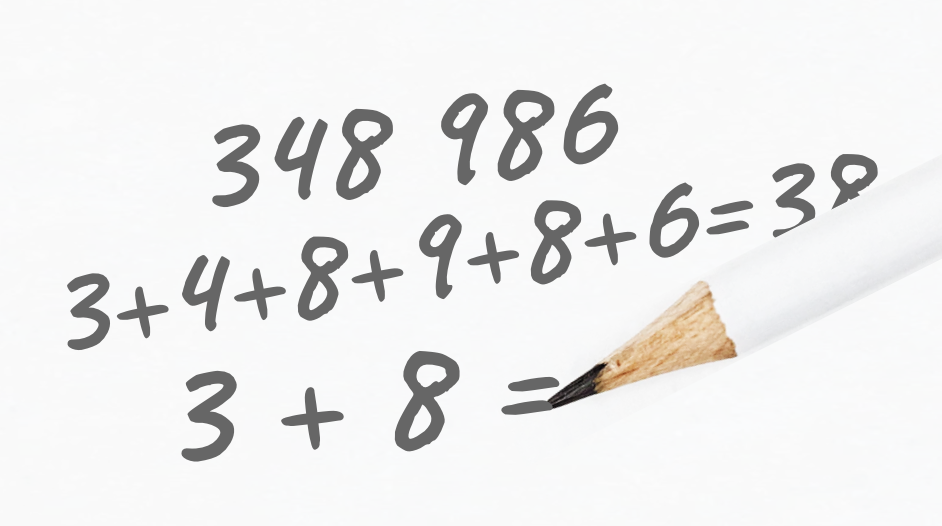Explorations and Games
Learning Goals:
- Make predictions related to patterns
- Develop and apply reasoning skills to make and test math predictions
- Communicate mathematical thinking orally and visually
The Exploration:
The digital root of a number is the result you get if you add up its digits, then add up the digits of that result, and so on, until you end up with a single digit.
Let’s try it out!
Pick a random number to start, then add up its digits.
(a very large number is a good place to start)
Ex. 348 976 → 3 + 4 + 8 + 9 + 8 + 6 = 38
Next, add up the digits of this new result.
Ex. 38 → 3 + 8 = 11
Next, add up the digits of this new result again.
Ex. 11 → 1 + 1 = 2
Once there is no adding left to do, you have found the digital root of your original number!
Try following this procedure with other large numbers.
Do you see any patterns or similarities?
Why do you think this pattern is appearing?
Can you find a set of starting numbers that end up with each digital root from 1-9? Which digital roots seem to be the easiest to find?
Questions and Prompts to Support your Child:
- What starting numbers have you tested? What made you choose those?
- Do you notice any similarities between numbers with the same digital roots?
Extensions & Adaptations:
- There is something special about numbers that have a digital root of 9. See if you can figure it out! Try experimenting with these numbers to get you started:
- 63
- 45
- 927
- 9,954
- 69,399
- 209,979
- Try flipping the exploration into a challenge: Starting at a digital root digit, grow your pattern by choosing a larger number with digits that would add to that total, then another larger number with digits that would add to that total, and so on. Can you make decisions along the way that will land you on a specific target number?
Adapted from: Julia Robinson Mathematics Festival – Activity Archive
Categories: Elementary


